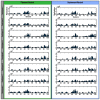The Right Hemisphere Is Responsible for the Greatest Differences in Human Brain Response to High-Arousing Emotional versus Neutral Stimuli: A MEG Study
- PMID: 34439579
- PMCID: PMC8412101
- DOI: 10.3390/brainsci11080960
The Right Hemisphere Is Responsible for the Greatest Differences in Human Brain Response to High-Arousing Emotional versus Neutral Stimuli: A MEG Study
Abstract
Studies investigating human brain response to emotional stimuli-particularly high-arousing versus neutral stimuli-have obtained inconsistent results. The present study was the first to combine magnetoencephalography (MEG) with the bootstrapping method to examine the whole brain and identify the cortical regions involved in this differential response. Seventeen healthy participants (11 females, aged 19 to 33 years; mean age, 26.9 years) were presented with high-arousing emotional (pleasant and unpleasant) and neutral pictures, and their brain responses were measured using MEG. When random resampling bootstrapping was performed for each participant, the greatest differences between high-arousing emotional and neutral stimuli during M300 (270-320 ms) were found to occur in the right temporo-parietal region. This finding was observed in response to both pleasant and unpleasant stimuli. The results, which may be more robust than previous studies because of bootstrapping and examination of the whole brain, reinforce the essential role of the right hemisphere in emotion processing.
Keywords: bootstrapping; emotion; magnetoencephalography (MEG); right hemisphere.
Conflict of interest statement
C.A.Z. is listed as a co-inventor on a patent for the use of ketamine in major depression and suicidal ideation; as a co-inventor on a patent for the use of (2
Figures





References
Grants and funding
LinkOut - more resources
Full Text Sources

